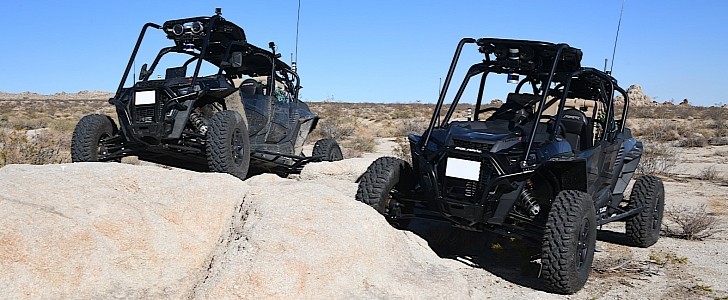As one of the leading sources of innovation for the military, DARPA has its hands deep in the autonomous weapons and vehicles pool. One of the projects it’s working on is called Robotic Autonomy in Complex Environments with Resiliency (RACER), and this week we've got the first update on that in months.
According to the agency, the program seeks to advance “off-road autonomy of combat vehicles” and “demonstrate the ability of these platforms to travel at speeds that maintain pace with manned combat vehicles in complex terrain typical of that seen in real situations.” More to the point, it’s looking to make autonomous combat vehicles suitable for use in… combat.
Three teams from the Carnegie Mellon University, NASA Jet Propulsion Laboratory, and the University of Washington were selected in the final months of last year to work on the project. They were handed something DARPA calls RACER Fleet Vehicles (RFVs) to work their magic on in terms of software and hardware.
Put together by Carnegie Robotics, the RFVs are all-terrain machines based on the Polaris RZR S4 1000 Turbo, and packing an extremely large suite of LIDARs, stereo cameras, color and infrared imaging cameras, RADAR, event and inertial measurement sensors.
They’re powered by a so-called Electronics Box (E-Box) that’s capable of sipping through four terabytes of sensor data per hour, allowing it to support “machine learning-based autonomy algorithms and stack approaches required of fast-paced combat maneuvers in complex terrain.”
In March, the National Training Center in Ft. Irwin, California will be home to the first major RACER field experiment. It will be attended by the four RFVs already built, and an additional four that are expected to be ready by then.
To give us a sense of what to expect, you can have a look at the two very short videos attached beneath this text.
Three teams from the Carnegie Mellon University, NASA Jet Propulsion Laboratory, and the University of Washington were selected in the final months of last year to work on the project. They were handed something DARPA calls RACER Fleet Vehicles (RFVs) to work their magic on in terms of software and hardware.
Put together by Carnegie Robotics, the RFVs are all-terrain machines based on the Polaris RZR S4 1000 Turbo, and packing an extremely large suite of LIDARs, stereo cameras, color and infrared imaging cameras, RADAR, event and inertial measurement sensors.
They’re powered by a so-called Electronics Box (E-Box) that’s capable of sipping through four terabytes of sensor data per hour, allowing it to support “machine learning-based autonomy algorithms and stack approaches required of fast-paced combat maneuvers in complex terrain.”
In March, the National Training Center in Ft. Irwin, California will be home to the first major RACER field experiment. It will be attended by the four RFVs already built, and an additional four that are expected to be ready by then.
To give us a sense of what to expect, you can have a look at the two very short videos attached beneath this text.








